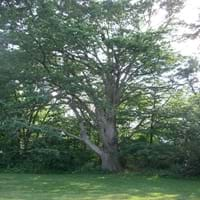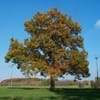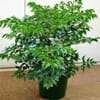Life Span
Perennial
Perennial
Type
Tree
Flowering Plants
Origin
North America, United States, Northeastern United States, Mid-Atlantic United States, Central United States, South-Central United States, Texas, Mexico
Italy, Southern Europe, western Balkans
Types
Not Available
not available
Habitat
Forests, Ridges, Rocky areas
Islands, Not Available
USDA Hardiness Zone
4-8
7-10
Sunset Zone
2a, 2b, 3a, 3b, 4, 5, 6, 7, 8, 9, 10, 11, 12, 14, 15, 16, 17
21,22
Habit
Oval or Rounded
Upright/Erect
Flower Color
Red, Light Green, Chartreuse
Lavender, Light Blue, White
Flower Color Modifier
Bicolor
Bicolor
Fruit Color
Brown
Non Fruiting Plant
Leaf Color in Spring
Green, Yellow green
Green, Light Green
Leaf Color in Summer
Dark Green
Green, Light Green
Leaf Color in Fall
Yellow, Orange
Green, Light Green
Leaf Color in Winter
Not Available
Light Green
Leaf Shape
Lobed
Compound
Plant Season
Spring, Summer, Fall
Summer, Fall
Sunlight
Full Sun
Full Sun, Partial Sun
Type of Soil
Clay, Loam
Loam
The pH of Soil
Neutral, Alkaline
Acidic, Neutral
Soil Drainage
Well drained
Average
Bloom Time
Spring, Late Spring
Early Summer, Summer, Late Summer
Tolerances
Pollution, Salt
Heat Tolerance
Where to Plant?
Ground
Ground, Pot
How to Plant?
Seedlings, Stem Planting
From bulbs, Seedlings, Stem Planting
Plant Maintenance
Low
Low
Watering Requirements
Do Not over Water, Never Over-water, Requires regular watering
Average Water Needs, Do Not over Water, Never Over-water, Requires regular watering
In Summer
Lots of watering
Lots of watering
In Spring
Moderate
Moderate
In Winter
Average Water
Average Water
Soil pH
Neutral, Alkaline
Acidic, Neutral
Soil Type
Clay, Loam
Loam
Soil Drainage Capacity
Well drained
Average
Sun Exposure
Full Sun
Full Sun, Partial Sun
Pruning
Remove damaged leaves, Remove dead leaves, Remove dead or diseased plant parts, Remove hanging branches
Remove damaged leaves, Remove dead branches, Remove dead leaves, Remove dead or diseased plant parts
Fertilizers
Fertilize the first year, No need to fertilize every year
fertilize every 2-3 weeks while growing, fertilize in growing season
Pests and Diseases
Insects, Red blotch
fungus
Plant Tolerance
Salt
Drought, Heat Tolerance
Flowers
Insignificant
Showy
Flower Petal Number
Not Available
Single
Showy Foliage
Yes
Not Available
Foliage Texture
Coarse
Not Available
Foliage Sheen
Glossy
Not Available
Attracts
Birds
Birds, Insects
Aesthetic Uses
Landscape Designing
Beautification, Landscape Designing, Showy Purposes
Beauty Benefits
No Beauty Benefits
Not Available
Environmental Uses
Air purification, Amazing growth rate, Food for insects, Nesting sites for birds, No fertilizer, pesticides, or herbicides needed, Prevent Soil Erosion
Air purification
Medicinal Uses
No Medicinal Use
Asthma, Cough, Unknown
Part of Plant Used
Tree trunks
Flowers, Leaves
Other Uses
Air freshner, Application in Furniture, Economic Purpose, Used as firewood, Used in construction, Used in pulpwood and lumber production, Wood is used for making furniture, Wood is used fore making tools, Wood is used in construction
Decoration Purposes, Showy Purposes, Used as Ornamental plant
Used As Indoor Plant
No
Yes
Used As Outdoor Plant
Yes
Yes
Garden Design
Feature Plant, Shade Trees
Mixed Border, Wildflower
Botanical Name
QUERCUS muehlenbergii
CAMPANULA pyramidalis
Common Name
Chinkapin Oak, Yellow Chestnut Oak
Chimney Bellflower
In Hindi
Chinkapin ओक
Chimney Bellflower
In German
chinkapin Oak
Schornstein Glockenblume
In French
chinkapin Oak
cheminée Bellflower
In Spanish
chinkapin Roble
Chimenea Bellflower
In Greek
Chinkapin Oak
καμινάδα καμπανούλα
In Portuguese
carv Oak
chaminé Bellflower
In Polish
Chinkapin Oak
komin Bellflower
In Latin
Oak Chinkapin
caminorum purgatores Bellflower
Phylum
Tracheophyta
Tracheophyta
Class
Magnoliopsida
Magnoliopsida
Family
Fagaceae
Campanulaceae
Clade
Angiosperms, Eudicots, Rosids
Angiosperms, Asterids, Eudicots
Tribe
Not Available
Not Available
Subfamily
Quercoideae
Not Available
Number of Species
Not Available
Not Available
Season and Care of Chinkapin Oak and Chimney Bellflower
Season and care of Chinkapin Oak and Chimney Bellflower is important to know. While considering everything about Chinkapin Oak and Chimney Bellflower Care, growing season is an essential factor. Chinkapin Oak season is Spring, Summer and Fall and Chimney Bellflower season is Spring, Summer and Fall. The type of soil for Chinkapin Oak is Clay, Loam and for Chimney Bellflower is Loam while the PH of soil for Chinkapin Oak is Neutral, Alkaline and for Chimney Bellflower is Acidic, Neutral.
Chinkapin Oak and Chimney Bellflower Physical Information
Chinkapin Oak and Chimney Bellflower physical information is very important for comparison. Chinkapin Oak height is 1,220.00 cm and width 1,520.00 cm whereas Chimney Bellflower height is 120.00 cm and width 45.70 cm. The color specification of Chinkapin Oak and Chimney Bellflower are as follows:
Chinkapin Oak flower color: Red, Light Green and Chartreuse
Chinkapin Oak leaf color: Green and Yellow green
Chimney Bellflower flower color: Lavender, Light Blue and White
- Chimney Bellflower leaf color: Green and Light Green
Care of Chinkapin Oak and Chimney Bellflower
Care of Chinkapin Oak and Chimney Bellflower include pruning, fertilizers, watering etc. Chinkapin Oak pruning is done Remove damaged leaves, Remove dead leaves, Remove dead or diseased plant parts and Remove hanging branches and Chimney Bellflower pruning is done Remove damaged leaves, Remove dead branches, Remove dead leaves and Remove dead or diseased plant parts. In summer Chinkapin Oak needs Lots of watering and in winter, it needs Average Water. Whereas, in summer Chimney Bellflower needs Lots of watering and in winter, it needs Average Water.





